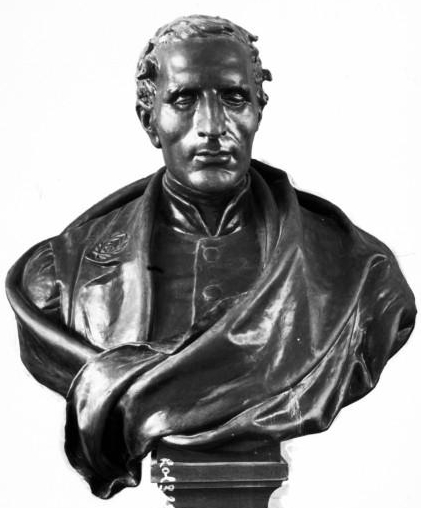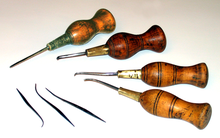Louis Braille

Bust of Louis Braille (1809-1852) by Étienne Leroux (1836-1906)
Who is Louis Braille? Has Louis got any disability, and what type of disability he has? What is his achievement that Blind people can do?
Yesterday it was January the fourth and it is a celebrated day for everyone to remember Louis. Why?
Louis Braille was a French educator and an inventor of the tactile writing machine to allow many Blind people to read and write (typed).

Louis born in Couprvay, France on the 4th of January in 1809. He came from three children, including himself and his parents. His father – Simon-René ran small successful enterprises as a leatherer and a horse tack marker. One day Louis was three years old; he was in Simon-René’s workshop and loved playing there. Louis played with many tools that his father worked with and one of the tools he tried to make many holes into the leather by using an awl. He bends down close to the leather material while holding the awl but the awl glanced the strongest leather and went for his eye. His eye became infected, and his parents took Louis to the doctor, to treat the ‘affected eye’ with a patch. The surgeon could not repair his eye in Paris. At the age of five, Louis lost both eyesight, and he went through a terrible time by having infections from three years old. Today this symptom is more likely a Sympathetic ophthalmia according to the doctors.

What a remarkable skill Louis had when he went after he became blind? According to the article, Louis asked his parent about darkness because he did not realise losing the eyesight. His parents were lucky and made many efforts for Louis as a child equal in the family. Simon-René made the hewed canes for Louis to navigate the house and the village, including the countryside paths, so he learned more and became independent. Louis was a bright and ‘creative mind’ educated scholar that amazed many local people, teachers and the priests. One of the scholars mentions that Louis’s life as childhood was peacefully in the home and the village before going to the Royal Institute for Blind Youth in Paris, France in 1819.

http://L’institut national des jeunes aveugles à Paris, façade vers le boulevard des Invalides
We need to remember the previous person before Louis, and it was Valentin Haüy who he was not blind himself. He never encountered any blind children/people before until he saw a group of blind men performing the sidewalk at the St. Ovid’s Fair while he was having lunch. First, he was horrified at the blind musician men and their behaviour such as wearing dunce caps, donkeys’ ears, and substantial cardboard glasses. This blind men group were doing a slapstick comedy act by using the music piece upside down, making funny noises through odd musical instruments and clowning themselves.
Valentin Haüy, himself was a skilled linguist in ten languages including ancient Greek and Hebrew and not a wealthy man. After his encounter with blind musician/performer men, he decided there is an urgent need for Blind children is education. Vallentin visited Charles le d’Eppe who established the school for the Deaf and discussed over the plan for the Blind children. He visited Saint Germaine des Prés church, and after the service, he met another blind beggar child – François Lesueur on the walk side in Paris. This time Valentin used the coin and gave to François by pressing coin down his palm. Valentin asked him what was the denomination of the coin.
More will come…
